Imagine stepping out your front door to be greeted by a tapestry of colors and textures, a living work of art that not only enhances your home’s curb appeal but also provides a serene escape from the everyday hustle and bustle. Whether you’re new to gardening or have a seasoned green thumb, “Landscaping Ideas For Front Yards” is your gateway to transforming your outdoor space into a personal oasis, filled with the joy and satisfaction that comes from nurturing your own patch of paradise.
In this guide, you’ll discover a hand-picked selection of garden plants that promise to thrive in your front yard, offering both visual delight and practical advantages. From low-maintenance perennials to show-stopping annuals, these plant choices will empower you to design a front yard that’s not only beautiful but also easy to maintain, making your gardening journey as enjoyable as the destination. With each plant and technique, we provide straightforward advice and creative ideas, ensuring you’ll feel confident and inspired every step of the way.
Incorporate Native Plant Species
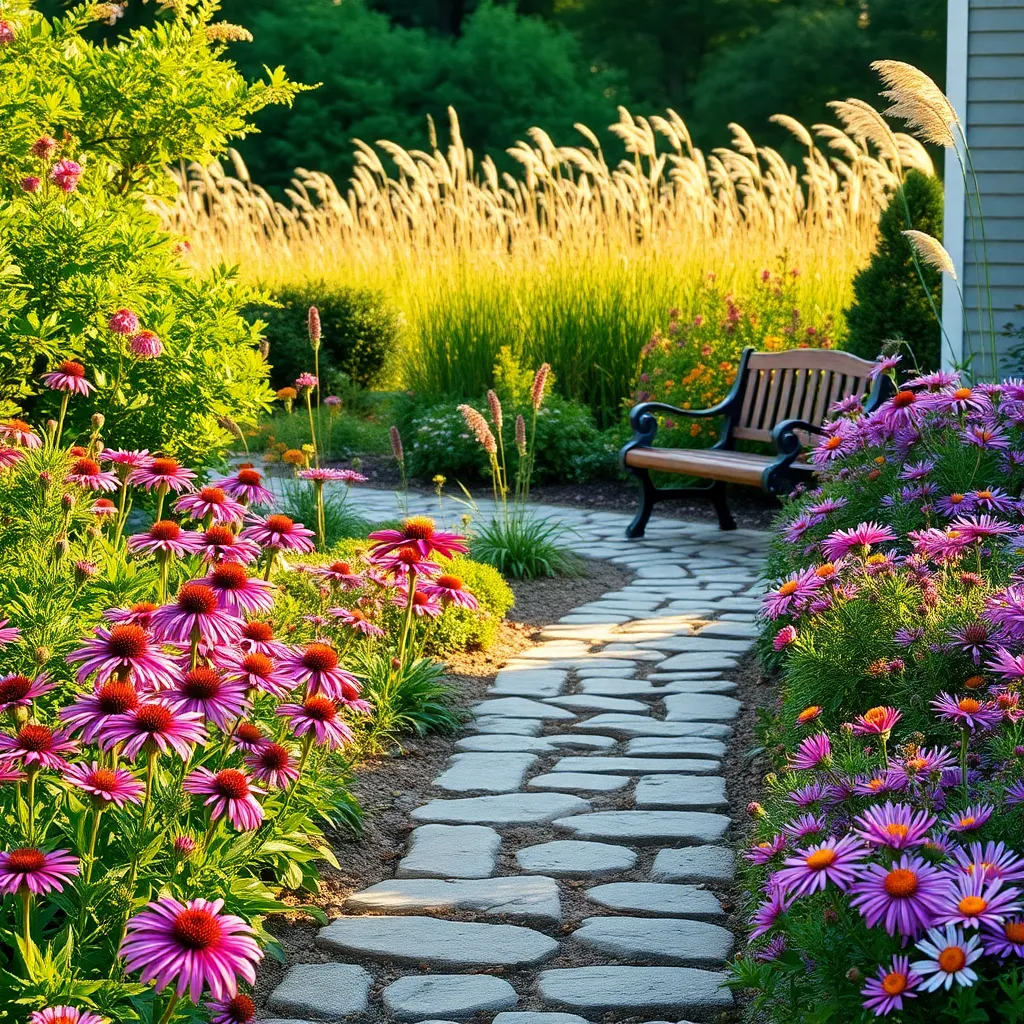
Incorporating native plant species into your front yard can significantly enhance its beauty and resilience. Native plants are adapted to local climates and soil types, making them easier to maintain and more sustainable in the long run.
Start by researching which native plants thrive in your region and suit your yard’s specific conditions. Consider factors such as sun exposure, soil type, and moisture levels to select plants that will flourish with minimal intervention.
For beginners, native perennials like coneflowers and black-eyed Susans are excellent choices as they require little care once established. These plants typically need well-draining soil and should be watered deeply but infrequently to encourage strong root growth.
Advanced gardeners might experiment with a mix of native grasses and shrubs to add texture and depth to the landscape. Incorporating mulch and compost can improve soil fertility and moisture retention, supporting these plants’ health and vitality.
To maximize biodiversity and attract local wildlife, consider planting a variety of native species that bloom at different times throughout the year. This approach not only creates a dynamic visual display but also supports pollinators and other beneficial insects continuously.
Create a Welcoming Pathway
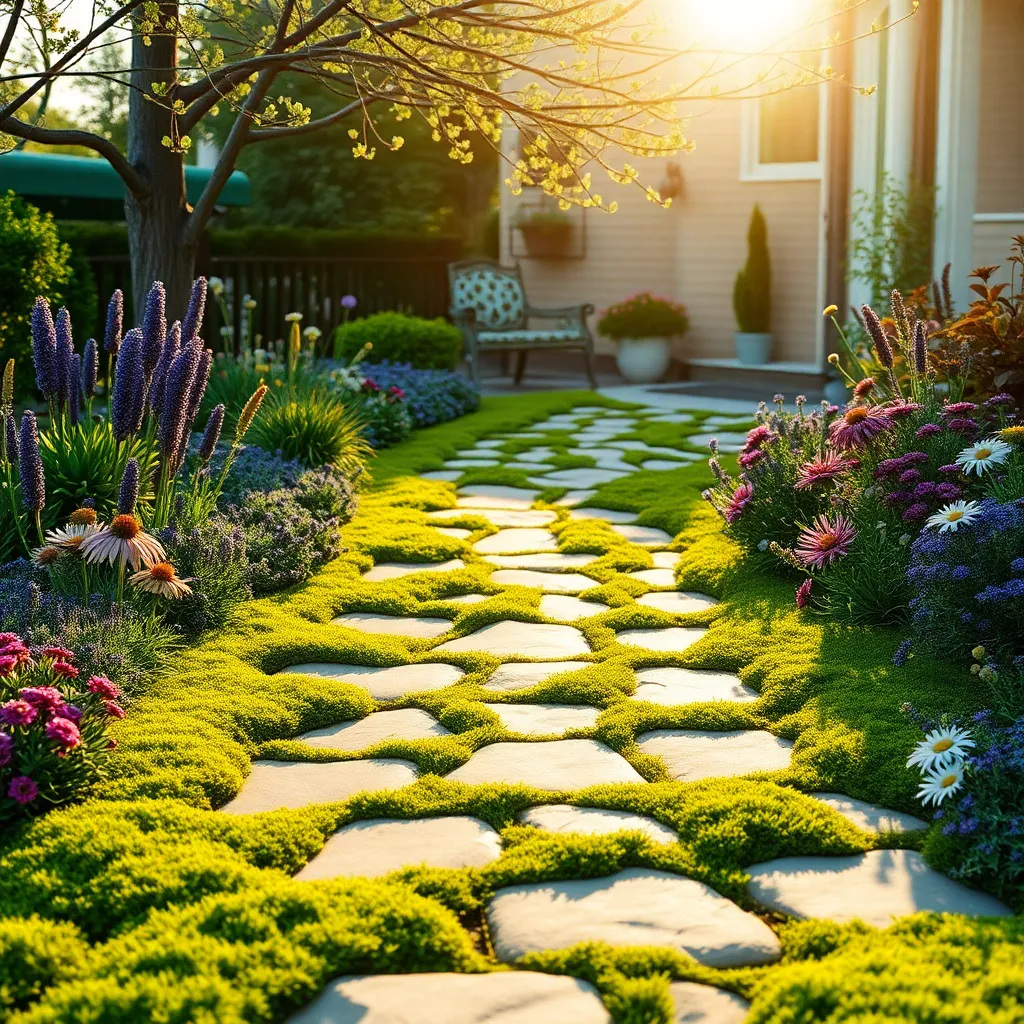
Creating a welcoming pathway in your front yard not only guides visitors but also enhances the overall aesthetic appeal. Start by choosing a path material that complements your home, such as gravel, stepping stones, or brick—each offering a unique texture and style.
When selecting plants to border your pathway, consider low-growing options like lavender or creeping thyme, which provide a fragrant and visually appealing edge. These plants are best suited to areas with well-drained soil and full sun, ensuring they thrive and maintain their beauty year-round.
For added interest, incorporate taller plants like ornamental grasses or daylilies at strategic intervals. These choices not only add height and movement but also require minimal maintenance, needing only occasional watering and seasonal pruning.
Lighting is essential for both safety and ambiance, so consider installing solar-powered lights along the path. This eco-friendly option is easy to install and provides a soft glow that highlights your pathway during evening hours.
Design with Year-Round Interest
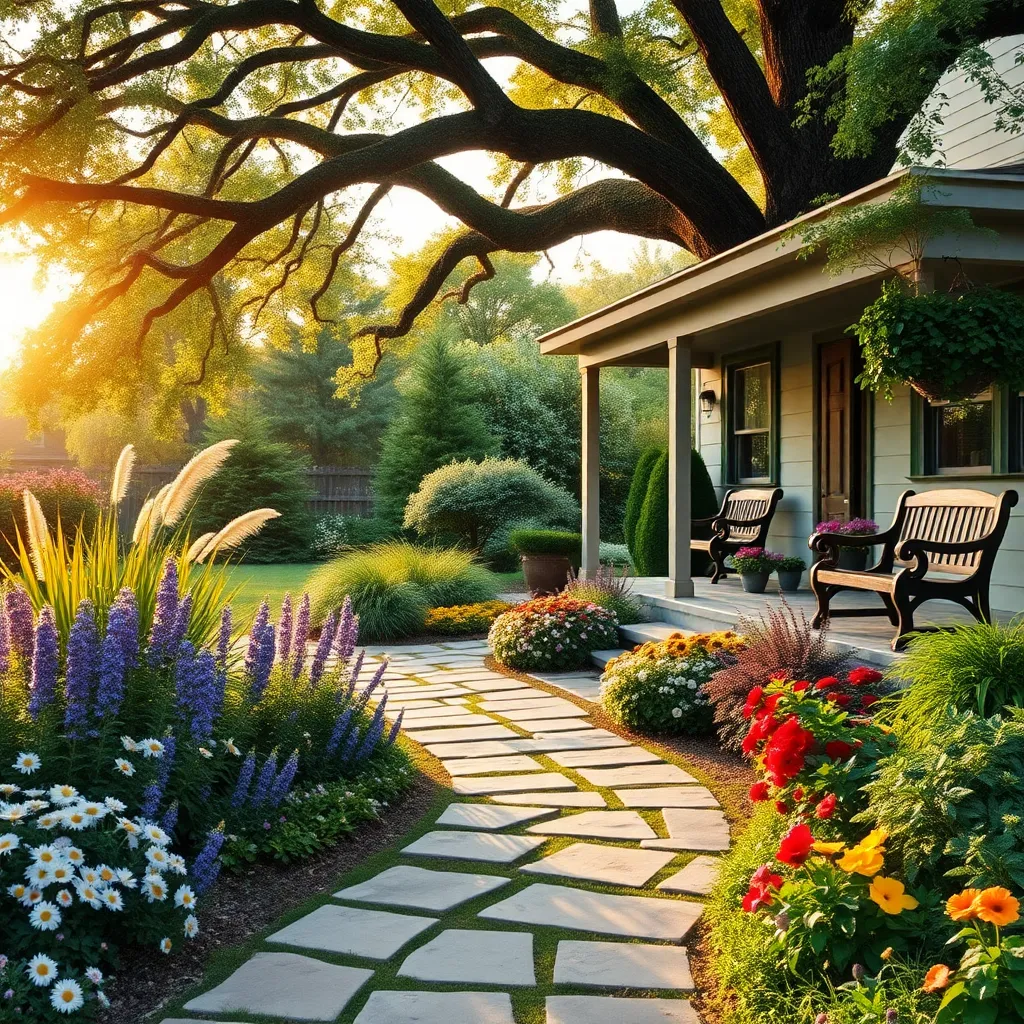
Transforming your front yard with year-round interest involves selecting plants that provide beauty in every season. Consider choosing a mix of evergreen and deciduous plants to ensure your garden remains vibrant throughout the year.
For a stunning winter display, incorporate evergreen shrubs like boxwood or holly, which offer structure and color even in the coldest months. These hardy plants require well-drained soil and should be watered regularly, but avoid overwatering to prevent root rot.
During spring and summer, introduce blooming perennials such as daylilies and coneflowers to add bursts of color. Ensure these plants receive full sun and are planted in nutrient-rich soil to encourage healthy growth and flowering.
As autumn approaches, consider planting ornamental grasses like switchgrass or muhly grass for their striking fall hues. These grasses thrive in a range of soil types and need minimal watering once established, making them a low-maintenance choice for any gardener.
Install Energy-Efficient Lighting
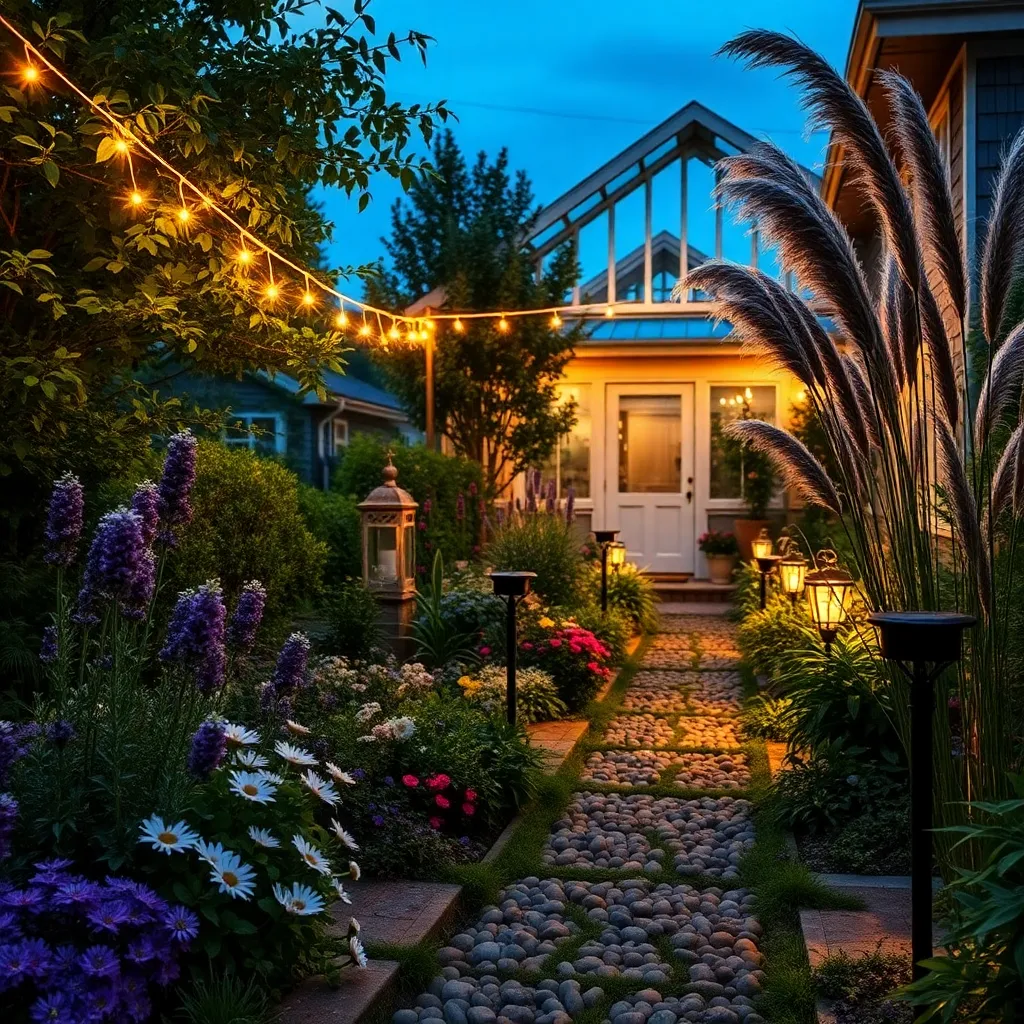
To create a welcoming ambiance in your front yard, consider installing energy-efficient lighting. LED lights are an excellent choice as they consume less energy and have a longer lifespan compared to traditional bulbs.
Position lights strategically to highlight key features of your landscape, such as pathways or decorative plants. This not only enhances safety but also adds dimension and depth to your garden during evening hours.
For a more environmentally friendly approach, solar-powered lights are a fantastic option. They harness sunlight during the day and automatically illuminate your garden at night, requiring no wiring and minimal maintenance.
Consider using timers or motion sensors to further optimize energy use in your garden lighting. These devices ensure that lights are only on when needed, reducing unnecessary energy consumption and prolonging the lights’ lifespan.
Utilize Mulch for Weed Control
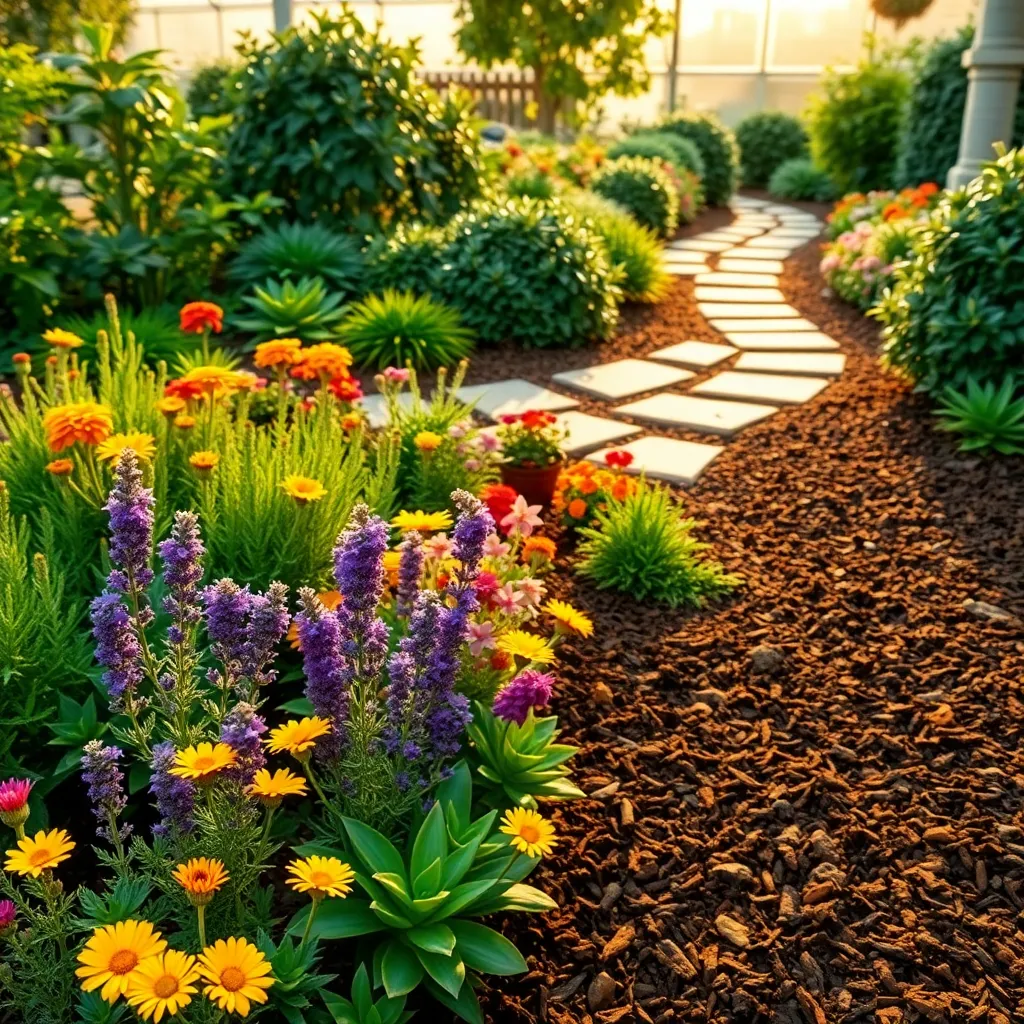
Mulching is a simple yet highly effective way to control weeds in your front yard landscaping. By covering the soil with a layer of mulch, you can effectively block sunlight from reaching weed seeds, thus preventing their growth.
There are various types of mulch to choose from, including organic options like bark, wood chips, and straw, as well as inorganic options like gravel and pebbles. Organic mulches are particularly beneficial as they break down over time, enriching the soil with nutrients.
To apply mulch effectively, spread a layer that is about 2 to 4 inches thick around plants and over bare soil areas. Be careful not to pile mulch directly against plant stems, as this can lead to rot and pest infestations.
Incorporating mulch into your garden not only controls weeds but also helps in retaining soil moisture. This means less frequent watering, which is both environmentally friendly and cost-effective.
Conclusion: Growing Success with These Plants
In transforming your front yard into a welcoming sanctuary, we’ve explored five essential relationship-building concepts: communication through collaborative planning, nurturing growth with shared responsibilities, patience in seeing efforts blossom, creativity in personalizing shared spaces, and resilience in overcoming landscaping challenges together. These ideas not only enhance your home’s curb appeal but also strengthen the roots of your partnership.
To take immediate action, choose one landscaping project to embark on with your partner this weekend—whether that’s planting a new flower bed or designing a cozy seating area. This shared endeavor will not only beautify your space but also fortify your connection.
Remember, successful relationships, like well-tended gardens, require ongoing care and attention. Save or bookmark this article to revisit these insights as you cultivate both your outdoor space and your bond. As you continue to nurture your relationship, let this journey of collaboration and creativity inspire a thriving, harmonious partnership. Together, you can build a foundation that not only withstands the test of time but flourishes with each passing season.

